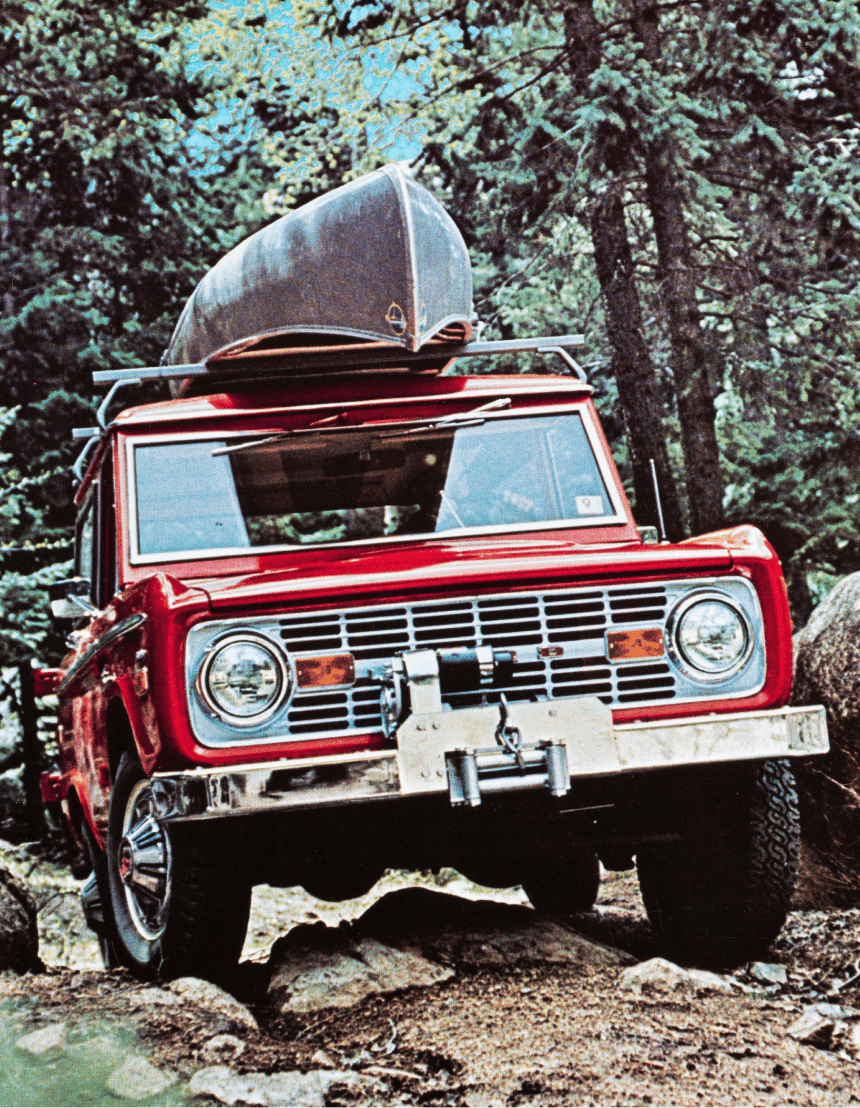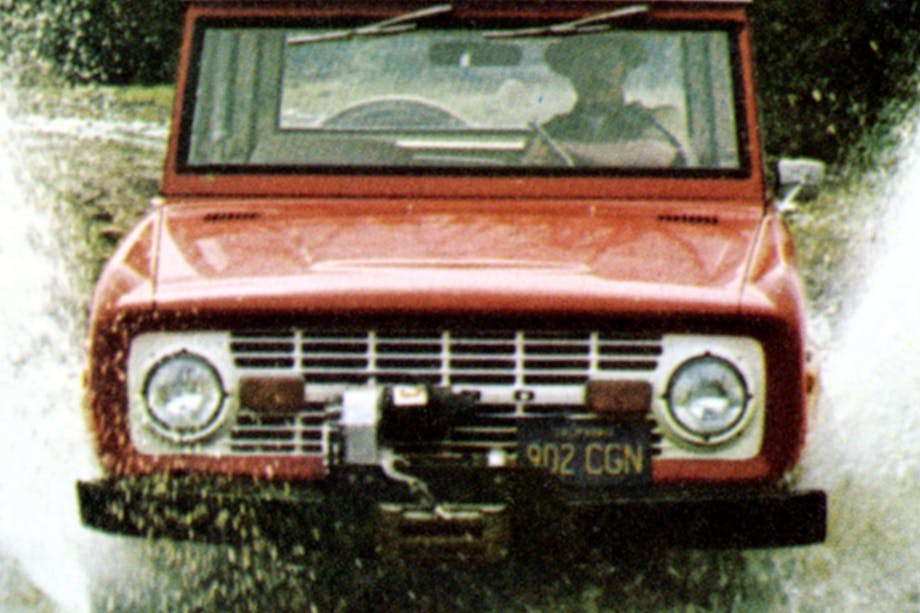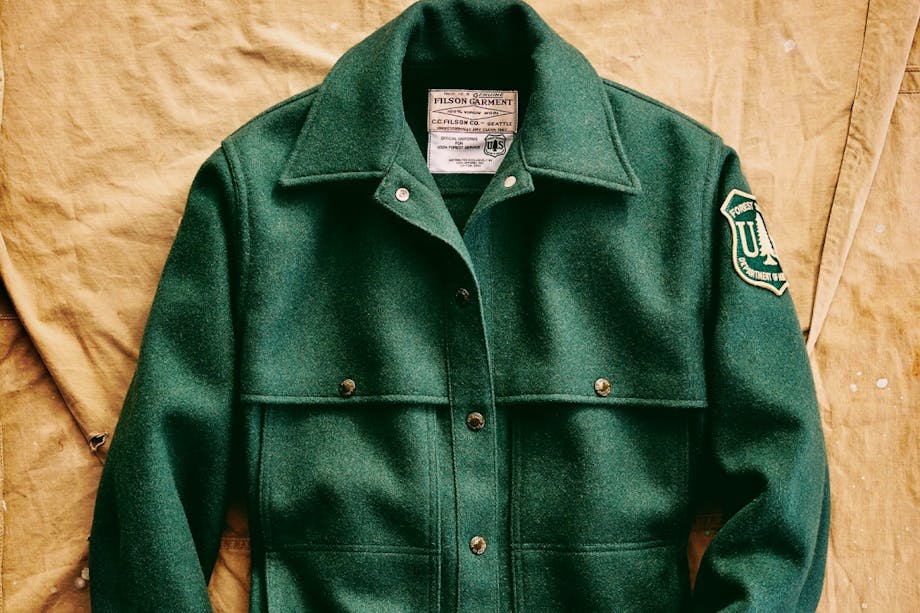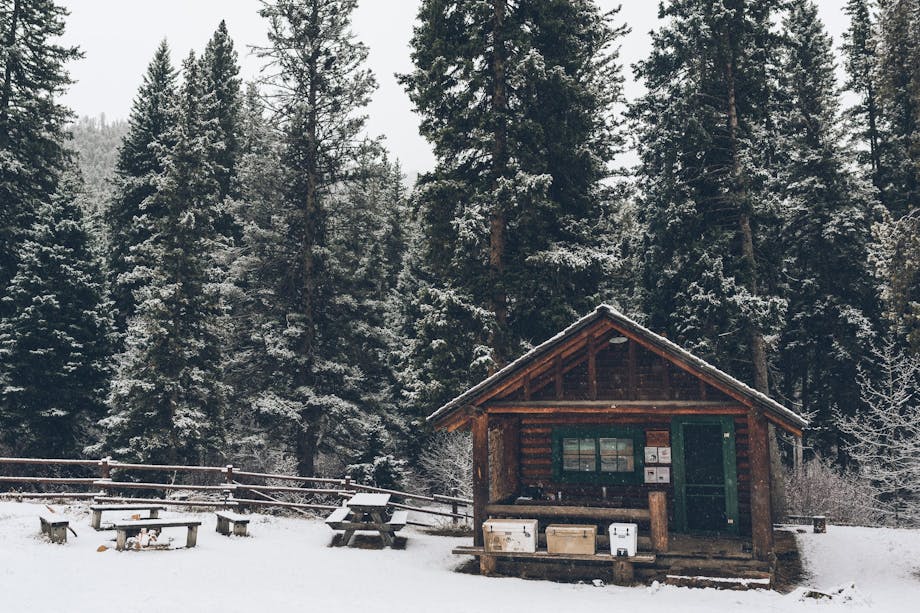When the U.S. Forest Service needed sturdy trail breakers to cover their 193 million acres of wildland, they turned to the Ford Bronco. Excellent ground clearance, superior maneuverability, slope-hugging stability, and a heavy-duty front axle—everything a Forest Ranger is looking for in an off-road vehicle.
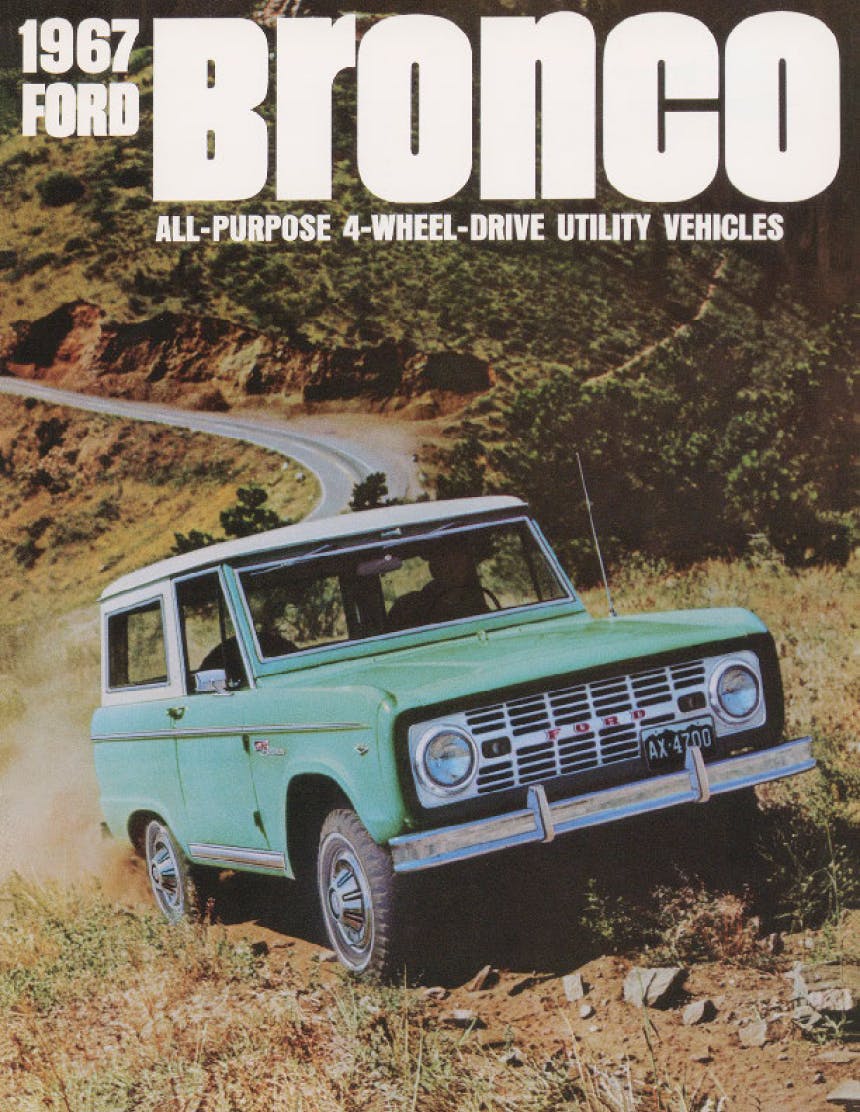
Way back in 1966, Ford introduced its original SUV and cut a trail to the great outdoors that would be followed by generations of Americans. And now, Bronco is coming back...
U.S. Forest Service Green
a.k.a.
Federal Standard 595, color chip No. 14260
But first, let’s take a step back. During WWII, Ford Motor Company factories churned out Army GPWs (jeeps) and shipped them overseas to help in the war effort. When the GIs returned to the states, they wanted off-road vehicles of their own and purchased surplus jeeps from the Army. Though rugged and fun, these models weren’t practical for use on the nation’s developing highway system.
The engineers at Ford stepped in to produce a vehicle rugged enough to explore the American backcountry while having the capability to cruise at highway speeds without doling out a beating to passengers with wind and road noise. The public wanted all-terrain utility, but they also wanted roomier interiors and protection from the elements that their jeeps lacked.
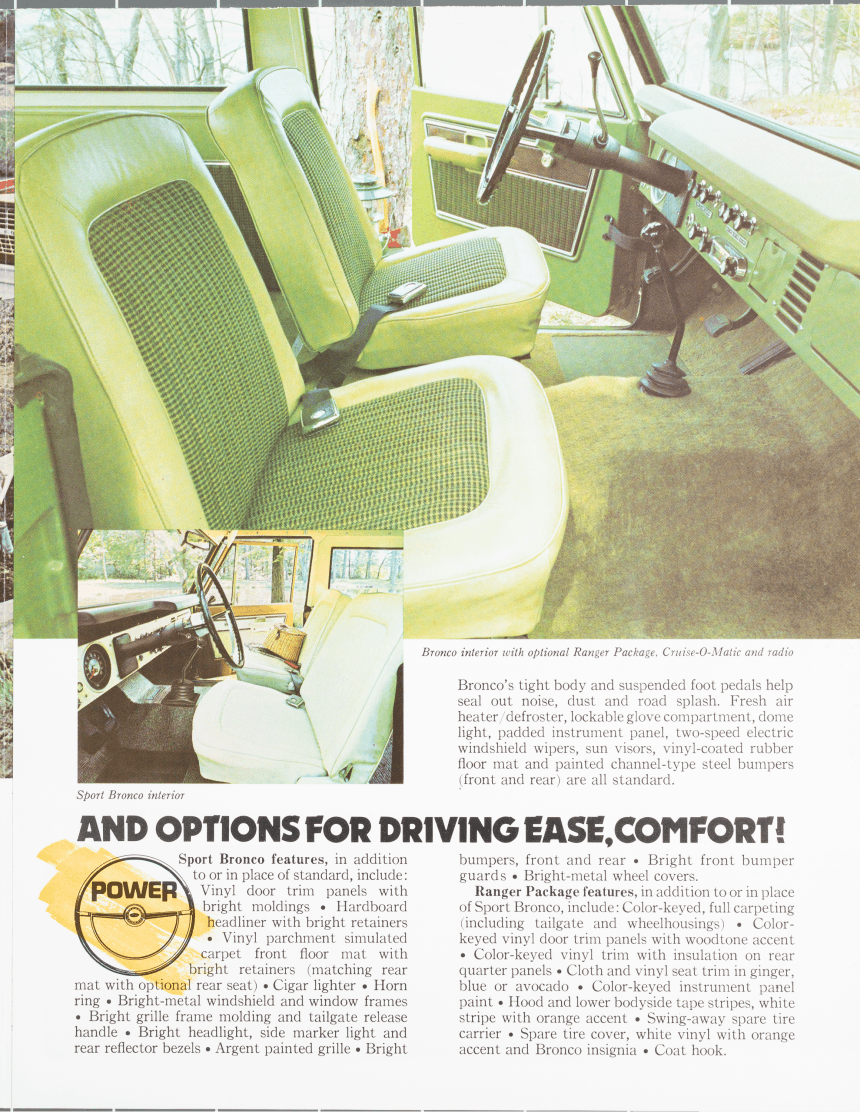
“ON A WARM, MICHIGAN WEDNESDAY IN AUGUST OF ’65, THE FORD BRONCO WAS UNLEASHED UPON THE COUNTRY.”

From ’66 through ’96, Ford released five generations of Broncos. When the first generation was unveiled, you could choose from the Roadster (top and door options available), the Sport Utility which looked like a small pick-up, and finally, the Wagon with its full-length hardtop and seating for five. The Wagon was a runaway favorite and became the iconic Bronco we’ve come to know and love. At the end of the first model year, Ford’s line of Broncos represented about 40% of sport utility sales. By the time of its final lap in 1996, over 1.1 million Broncos had rolled out of a Ford factory.

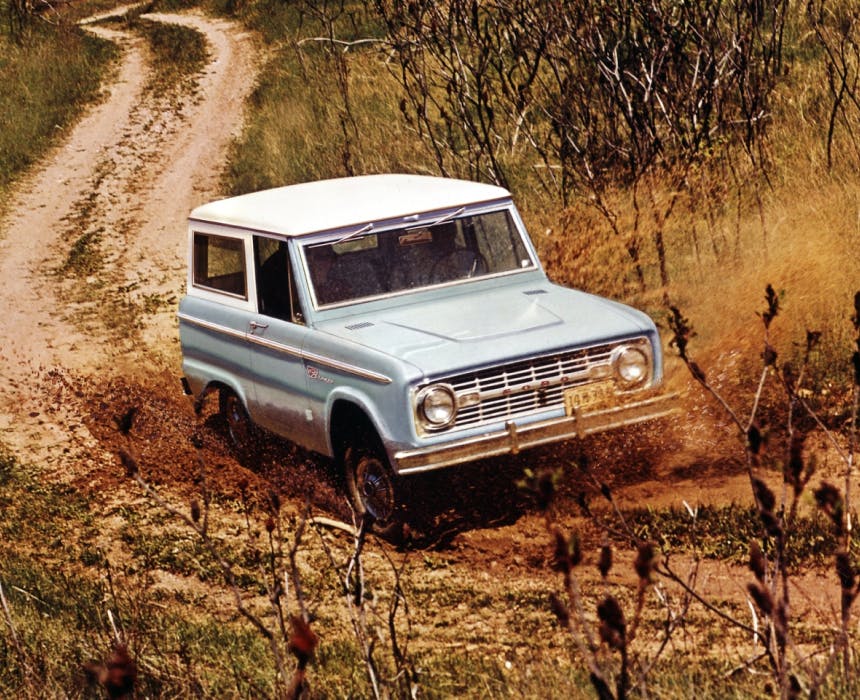
Rural towns employed the all-purpose utility of the Bronco for vehicles that needed to get to hard-to-reach spots. For a time in the ‘70s, the Northern Illinois Gas Company even employed Broncos as “gas sniffer” rigs to search out gas leaks on the city streets. On top of taming the terrain for local and national municipalities, the Bronco conquered the off-road racing world. When Bronco enthusiasts talk racing lore, the key topic of conversation is the Bronco’s dominance in Baja, as the only 4×4 vehicle to ever win the Baja 1000, and western state racing. The Bronco’s V-8 engines destroyed the competition in the desert but also saw success in autocross, sand drags, and monster truck arenas.

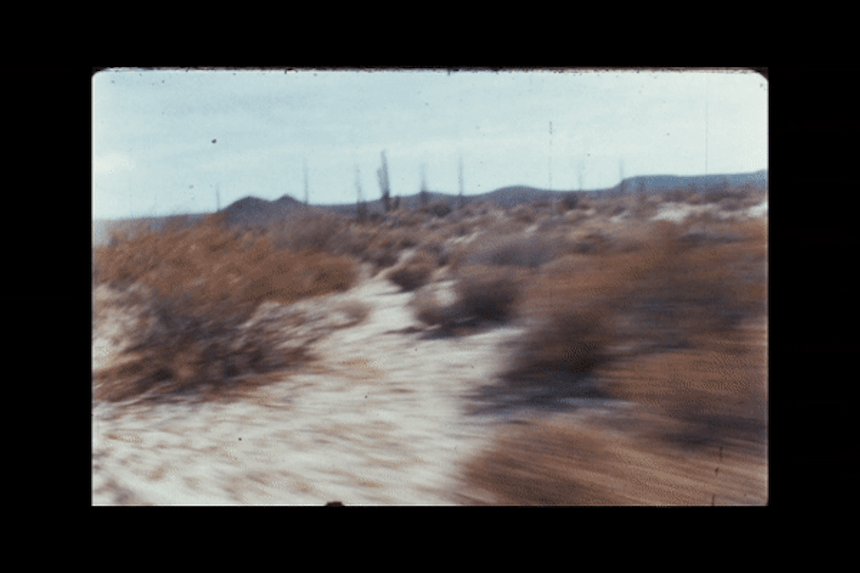
The appetite for Broncos has only grown since the last one rolled off the line in ’96. So, it’s no surprise, news of the Bronco’s return to production has kicked up a stir. Ford Motor Company promises the new Bronco will be a “no-compromise midsize 4×4 utility for thrill-seekers who want to venture way beyond the city.”
Here at FILSON, we’re all in.
